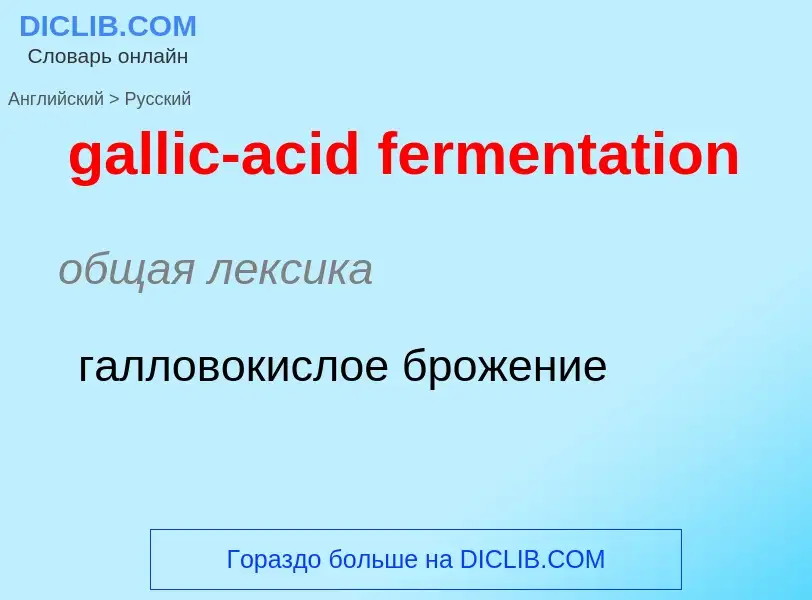Перевод и анализ слов искусственным интеллектом ChatGPT
На этой странице Вы можете получить подробный анализ слова или словосочетания, произведенный с помощью лучшей на сегодняшний день технологии искусственного интеллекта:
- как употребляется слово
- частота употребления
- используется оно чаще в устной или письменной речи
- варианты перевода слова
- примеры употребления (несколько фраз с переводом)
- этимология
gallic-acid fermentation - перевод на русский
общая лексика
галловокислое брожение
[fə'mentətiv]
общая лексика
ферментирующий
бродильный
сбраживающий
ферментативный
прилагательное
общая лексика
вызванный брожением
бродильный
ферментативный
вызывающий брожение
сбраживающий
Википедия
Industrial fermentation is the intentional use of fermentation in manufacturing processes. In addition to the mass production of fermented foods and drinks, industrial fermentation has widespread applications in chemical industry. Commodity chemicals, such as acetic acid, citric acid, and ethanol are made by fermentation. Moreover, nearly all commercially produced industrial enzymes, such as lipase, invertase and rennet, are made by fermentation with genetically modified microbes. In some cases, production of biomass itself is the objective, as is the case for single-cell proteins, baker's yeast, and starter cultures for lactic acid bacteria used in cheesemaking.
In general, fermentations can be divided into four types:
- Production of biomass (viable cellular material)
- Production of extracellular metabolites (chemical compounds)
- Production of intracellular components (enzymes and other proteins)
- Transformation of substrate (in which the transformed substrate is itself the product)
These types are not necessarily disjoined from each other, but provide a framework for understanding the differences in approach. The organisms used are typically microorganisms, particularly bacteria, algae, and fungi, such as yeasts and molds, but industrial fermentation may also involve cell cultures from plants and animals, such as CHO cells and insect cells. Special considerations are required for the specific organisms used in the fermentation, such as the dissolved oxygen level, nutrient levels, and temperature. The rate of fermentation depends on the concentration of microorganisms, cells, cellular components, and enzymes as well as temperature, pH and level of oxygen for aerobic fermentation. Product recovery frequently involves the concentration of the dilute solution.


![Mitochondrial]] outer membrane is omitted. Mitochondrial]] outer membrane is omitted.](https://commons.wikimedia.org/wiki/Special:FilePath/Cellular respiration.gif?width=200)
![Fermentation is used to generate the heme protein found in the [[Impossible Burger]]. Fermentation is used to generate the heme protein found in the [[Impossible Burger]].](https://commons.wikimedia.org/wiki/Special:FilePath/Impossible Burger - Gott's Roadside- 2018 - Stierch.jpg?width=200)

